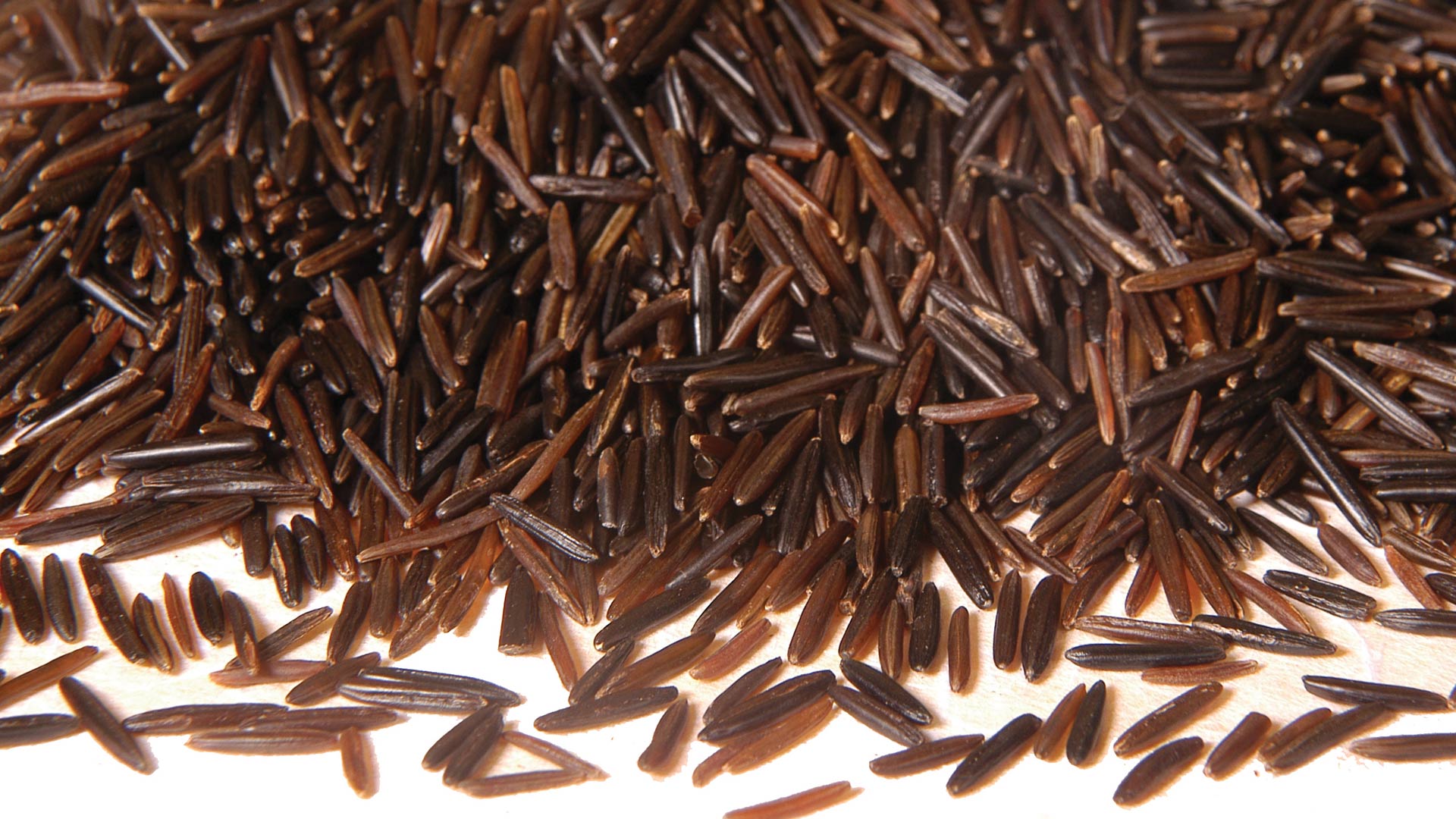— by Jonathan Eisenthal
photos by Rolf Hagberg
Wild rice, the high-protein, high-energy cereal grain long revered by native peoples as a sacred and life-giving food, may be a significant source of beneficial compounds that could grow the commodity’s consumer base. In particular, early indications of the cholesterol lowering effect of wild rice, its potential as a staple in diabetic or insulin resistant-diets and its use as a natural food preservative all offer potential means for adding value to this important grain product.
“We believe the nutraceutical or functional food potential of wild rice offers new opportunities for consumers, producers and processors,” says Beth Nelson, president of the Minnesota Cultivated Wild Rice Council.
To explore the research done thus far on wild rice’s nutritional benefits and therefore identify future possible research and projects that may lead to commercialization, AURI commissioned a literature review, which was spearheaded by AURI Project Manager Randy Hilliard.
University of Minnesota Food and Science Nutrition Professor Daniel Gallaher conducted the scientific literature review of wild rice in partnership with Professor Mirko Bunzel, chairman of the Department of Food Chemistry and Phytochemistry at Karlsruhe Institute of Technology in Germany.
Bunzel’s specialty in phytochemicals proved to be a key element in the research. Phytochemicals are a class of compounds that, while not considered vitamins, may have considerable health benefits. Among many found in wild rice, they found particular promise in a phytochemical
called oryzonal.
“Oryzanol is a compound present in other cereals, but which seems to be present in greater concentrations in rice,” says Gallaher. “There is evidence that it produces a cholesterol-lowering effect.”
The report cites University of Minnesota research, funded by the Minnesota Cultivated Wild Rice Council, in which rats’ cholesterol production dropped to zero when wild rice was added to their diet. The response was not as dramatic in humans, but Gallaher says the work points to a way to unlock the health potential of the grain.
“Oryzonal is bound in the wild rice in such a way that it may not be very available for absorption in the human gastrointestinal tract,” Gallaher says. “So one idea we have is to process the wild rice in a way to release the oryzonal, so it would have this biological effect.”
Wheat bran has been successfully processed this way, so research would be needed to determine if it can be done economically with wild rice as well.
Wild rice has also won a small but devoted following as a flavoring ingredient in brats and hamburgers, and this has led to further research and the discovery that wild rice possesses anti-oxidant properties that, when mixed with meat, keep the product fresher for a longer time period.
“With food producers that want to maintain a natural food ingredient list and stay away from artificial preservatives, wild rice could be a very interesting additive,” says Gallaher. “It does add its own distinct flavor, so it might not work with every product—consumer research would have to work out which products make a good match.”
In addition, scientists want to measure the glycemic index of Minnesota wild rice, says Gallaher: “We need to have the glycemic index for Minnesota wild rice measured, and then it can be publicized as a food that works well in diets geared to diabetes or insulin resistance—the pre-diabetic condition.”
“We have seen exciting indications in this review, and believe that these findings could lead to further research and commercialization, spurring interest in developing new products to take to market,” says Hilliard. “We look forward to future opportunities to partner with the Minnesota Cultivated Wild Rice Council and others to bring some of these ideas to the market.”
AURI will also take the information in the literature review, which can be viewed online at auri.org, and bring it to the attention of food processing companies and engineers, to spur the further development of this important Minnesota commodity.
